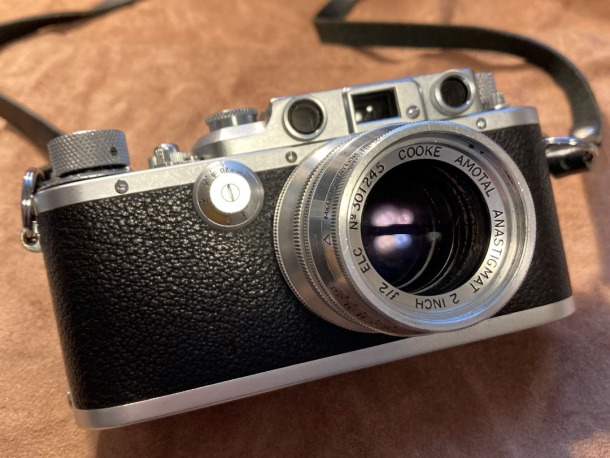
Leica IIIB (1938) with the Amortal lens
Professor Faculty of Letters, Arts and Sciences Arts and Sciences Naohiko Seto
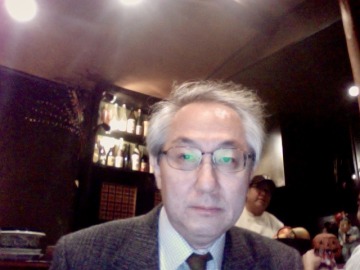
Professor Faculty of Letters, Arts and Sciences. French Language and Literature Course. Medieval French literature and philology. Researches manuscripts of 12th and 13th century lyric poetry, especially that of the troubadours. I am overwhelmed by the depth of tradition in Western textual research since the 17th century. This photo was taken by a French acquaintance of mine. The blur is simply due to camera shake.
About 30 years ago, I was given a Leica Barnack IIIf camera (made in 1947) from the German manufacturer Leica, along with a lens (Elmar 5cm). This was the ultimate manual camera, in an era when digital cameras did not yet exist, and you could decide the aperture and shutter speed yourself.
I was hesitant to try it out, but I was amazed at the results. It was a warm and indescribable image that was hard to imagine from such a small camera. The person who gave it to me was a senior in my field, and he was an extraordinary man in both physique and personality. Since then, I have looked up to him as my mentor when it comes to cameras and lenses.
After that, I tried out various lenses myself. Leica lenses are expensive, so many interchangeable lenses have been produced in various countries since before the war. Among them, there was one lens that surprised me: "Wow, this is it!" It has a wonderfully clear and smooth image. It's the British-made Cooke Amortal Anastigmat. The specs are 2 inches f.2, which means a 50 mm aperture and 2 apertures. It's a rather clumsy lens, and the aperture and rangefinder adjustment rings are loose. One book says that it "is cursed with the fate of being the least accurate rangefinder-coupled lens in history, attached to an extremely cheap-looking lens barrel."
調べてみると、ミステリアスな歴史を持っています。もともと米国で1948年から発売されたフォトンというカメラに付いていたレンズでした。フォトンが高すぎて売れずすぐに発売中止になってしまい、テイラー&ホブソン社から供給されたこのレンズが余ってしまった。そこで、ライカに取り付けられるように下部のマウントをイタリアで加工して別売したらしい。リードという英国のカメラに付ける沈胴式の別バージョンもあります。
The lens from the front (left) and side (right). It is stamped "Taylor Taylor & Hobson, Made in England." The lens barrel is worn out, but the image is good. The mysterious numbers 2, 4, and 5, which are the result of the reuse of the Photon, remain, but they are a bit sloppy and good.
Looking at it from the front, the glass with its pale blue coating seems to draw you in. I love using it because the image quality is excellent and it is made entirely of aluminum and is lightweight. It is definitely different from digital lenses that are simply unremarkable, being sharp and having good color reproduction. It is the result of optical engineers of the past who pursued atmospheric depiction in an era when pixel count was not a big concern.
Photo taken with Cooke Amortal Anastigmat lens
Left: March 2018, Sukiyabashi Bridge. Willow leaves flowing in the wind.
Right: March 2023, Kodaira Furusato Village. A girl in red spinning hoops
Immersing myself in the world of "fluctuations" created by beautiful bokeh is soothing to the soul. Smartphone cameras and other cameras that you can just press to take a picture are convenient for recording, but you need to determine the lighting conditions, set the aperture and shutter speed yourself, and adjust the rangefinder. That's the beauty of old lenses, which allow you to adjust the depth of field in this way. Apparently, materials such as lead that can no longer be used today were used for the glass. I hope everyone will recognize the beauty of film camera lenses, not just this strange lens.

This photo was taken under the JR railway tracks in Okachimachi in February 2018. The bokeh of the pillars is beautiful.

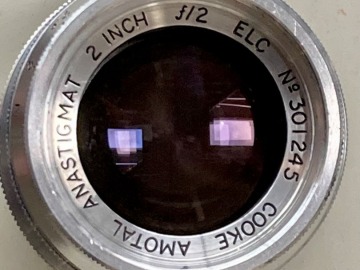
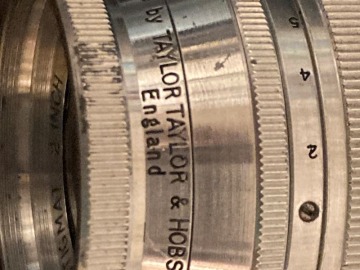

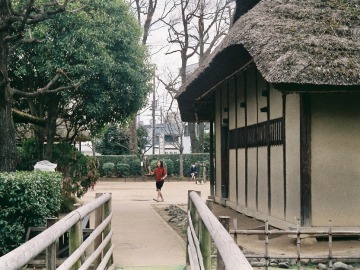


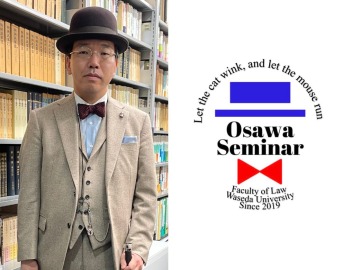
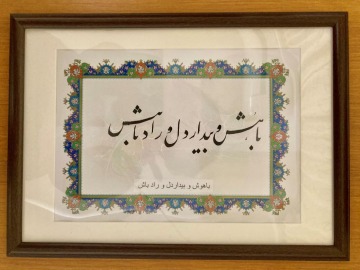

![[Save version] Map of the four main campuses](https://www.waseda.jp/inst/weekly/assets/uploads/2025/09/17cb2975123fc5103172ef60bd98608d-610x458.jpg)

